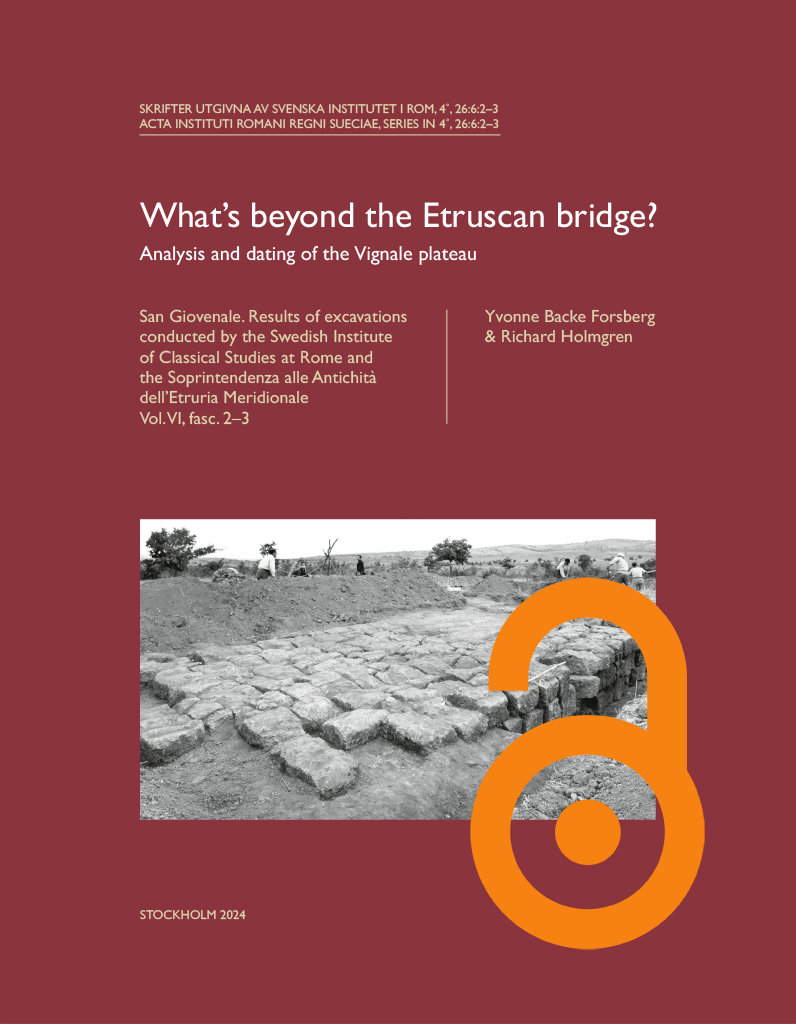San Giovenale. Results of excavations conducted by the Swedish Institute of Classical Studies at Rome and the Soprintendenza alle Antichità dell’Etruria Meridionale Published by the Swedish Institute of Classical Studies in Rome. Volumes published 2007 and earlier distributed by Astrom Editions. Volumes published 2008 and later distributed by Eddy.se AB. Vol. 1. Topographical introduction and history of excavations, photogrammatic methods and survey. Tombs Fasc. 1. Bengt E. Thomasson 1972. General introduction, Stockholm. ISBN: 978-91-7042-007-8 (softcover: 12 pp.) Fasc. 2–3. Bertil Hallert 1967. Basics principles of photogrammetric methods used for measurements of San Giovenale & Bertil Hallert, Aerial photogrammetric survey of the San Giovenale area, Lund (softcover: 12 pp.) Fasc. 4. Carl Eric Östenberg 1972. The tombs: introduction, Stockholm. ISBN: 978-91-7042-008-5 (softcover: 16 pp.) Fasc. 5. Eric Berggren & Kristina Berggren 1972. The necropoleis of Porzarago, Grotte Tufarina and Montevangone. With drawings by Börje Blomé. With appendices by N.-G. Gejvall and Ruta Suksis-Jansson and with an addendum by Olof Vessberg, Stockholm. ISBN: 978-91-7042-000-9 (softcover: 134 pp., 63 pls.) Fasc. 6. Carl Erik Östenberg & Olof Vessberg 1972. The necropolis at La Staffa, Stockholm. ISBN: 978-91-7042-009-2 (softcover: 24 pp.) Fasc. 7. Carl Erik Östenberg 1969. The necropolis at Castellina Camerata, Lund (softcover:…
Luni sul Mignone e problemi della preistoria d’Italia By Carl Eric Östenberg Published by the Swedish Institute of Classical Studies in Rome. Distributed by Astrom Editions Summary (excerpt) The Swedish Institute in Rome, in collaboration with the Soprintendenza alle Antichità dell’Etruria meridionale, started excavating the site named Luni in 1960. The field work went on with annual seasons lasting 2 months during the following three years, and gave interesting results concerning several periods of Italian prehistory. Luni is situated in the Comune di Blera, Provincia di Viterbo, about 80 kilometres north of Rome and about 20 kilometres inland from Tarquinia, in a district at the foot of the Tolfa Mountains which is nowadays isolated but beautiful. The 550 m long and 140 m wide tuff plateau is separated from its surroundings, with steep sides sloping to the river-eroded valleys on each side. In the Etruscan period it was a military outpost on the southern border of the territory belonging to Tarquinia, fortified in the 5th century B.C. by a city wall, defensive ditches and a castle. The river Mignone that flows just below Luni was the boundary between Tarquinia and Caere. The hill is still called Luni by the inhabitants…


